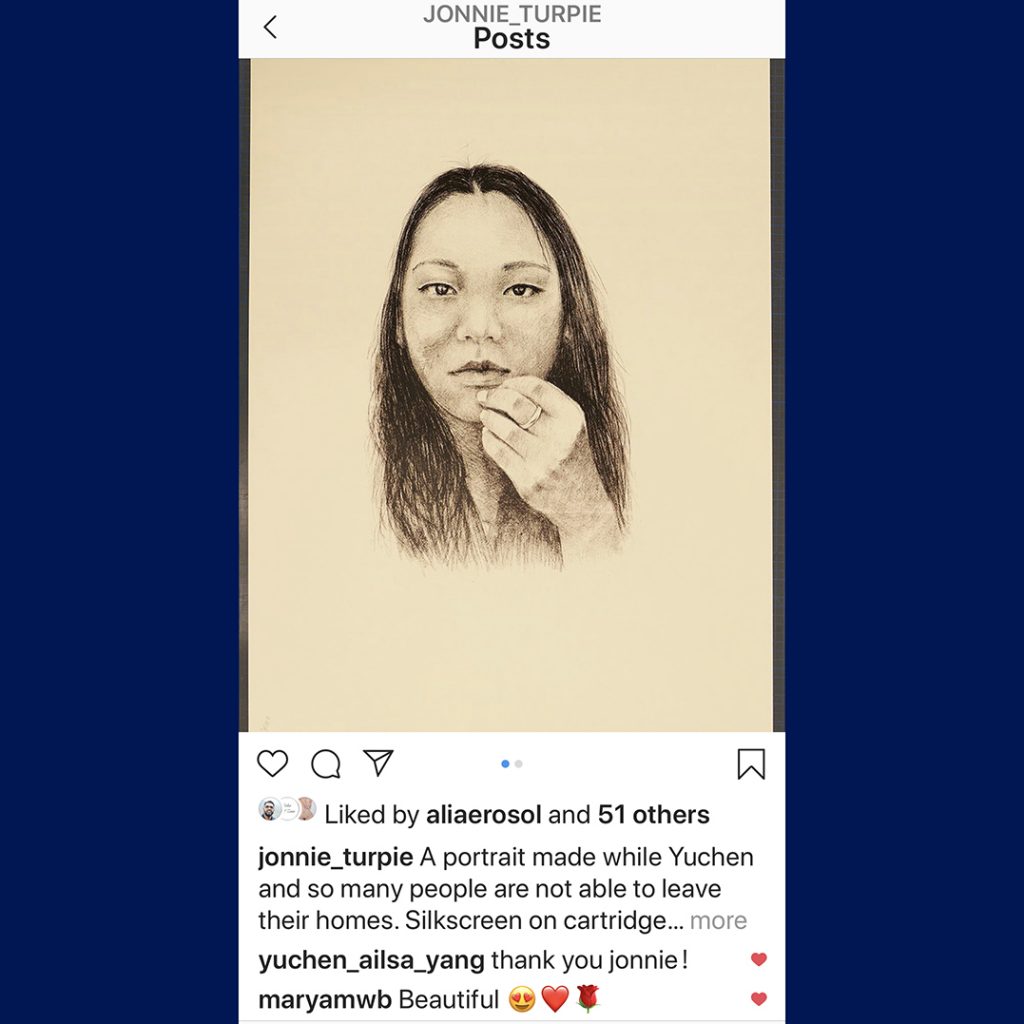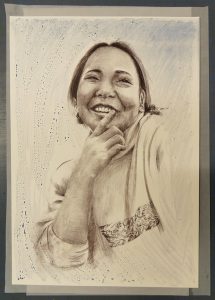 I embarked on a portrait of Yuchen Yang in August 2018. A portrait would be a gift to remember her time in the School of Art when she returned to China. I made the drawing and print tests while she traveled to European cities where she would see the work of great EU artists and also make watercolours in each city and share to Instagram.
I embarked on a portrait of Yuchen Yang in August 2018. A portrait would be a gift to remember her time in the School of Art when she returned to China. I made the drawing and print tests while she traveled to European cities where she would see the work of great EU artists and also make watercolours in each city and share to Instagram.
I had never drawn a portrait of a Chinese person and was excited to see what drawing technique might work. I choose to make an A2 drawing on mark resist using the graphite pencils. I selected a photograph to work from that I had taken when we and pianist Didi Xiao had met to talk about Chinese festival possibilities. I had taken other photos over the months, but this encapsulated Yuchen’ bright, happy and thoughtful demeanour.
I focussed the drawing on her head, up stretched hand and elements of her jumper, including the strip of graphics. The folds of the jumper on her shoulder I let disappear onto the white of the paper.
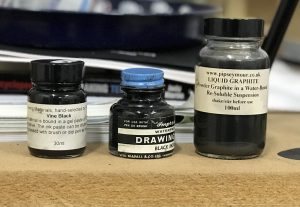
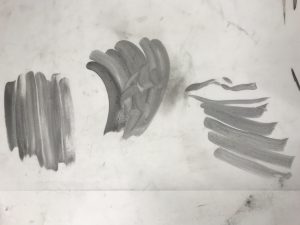
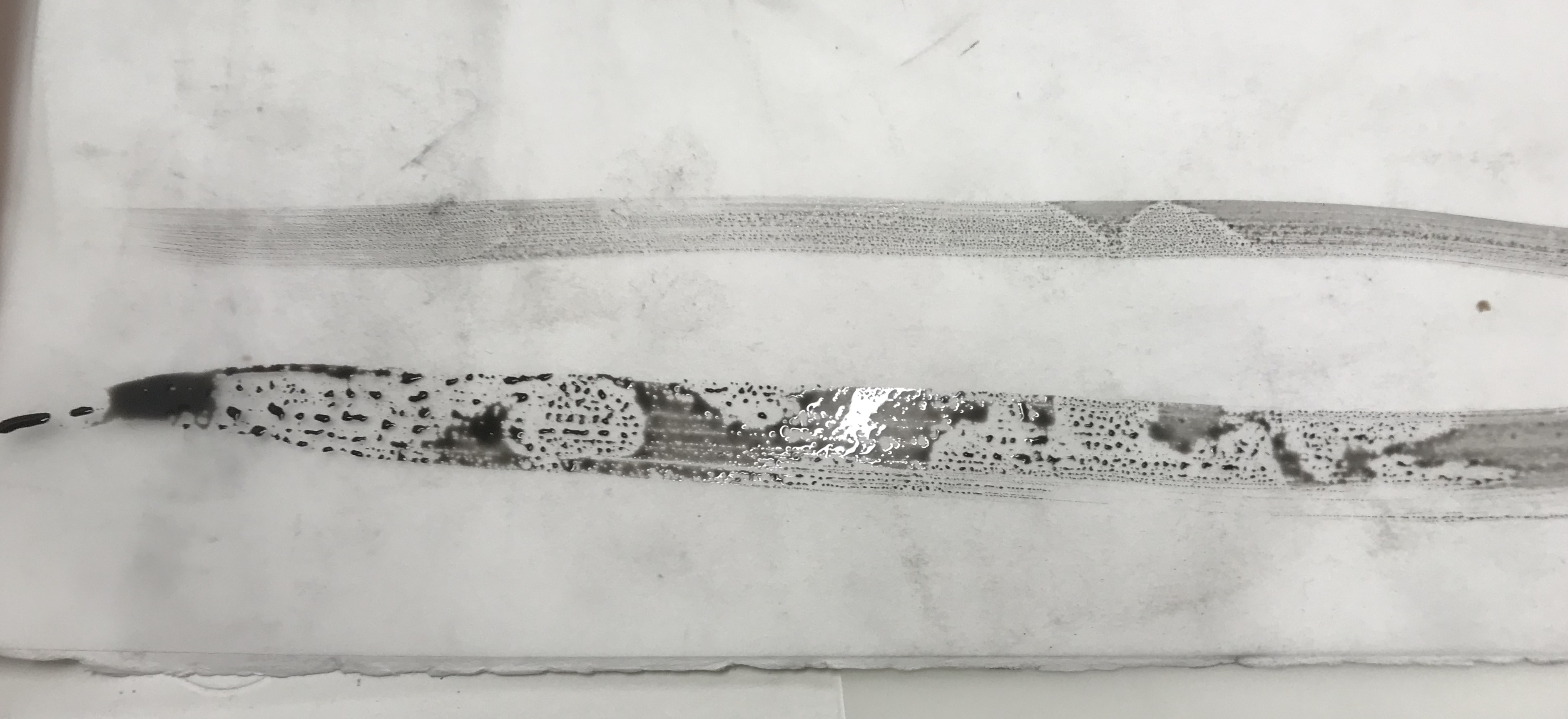
Having drawn the portrait I considered what additional marks might enhance the image and point to her artistic taste and skills. I had recently tested graphite powder, graphite suspended in water, litho touches, Indian inks and a special concoction ‘Vine Black’.
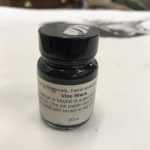
Vine Black is calcined charcoal pigment made from grape or vines, with a long history of application by artists. The pigment is suspended in a gum arabic solution. I noted that the vine black retained its depth, but quickly dispersed into beads of pigment rater than even brush marks on the mark resist. This reminded me of Yuchen’s watercolours and stone litho drawings of octopus. I freely brushed some light beaded marks around the edges of the paper to give an indication of the mark making. Visually it felt a little bit of an afterthought, but worth pursuing to screen print as they could be stopped out.
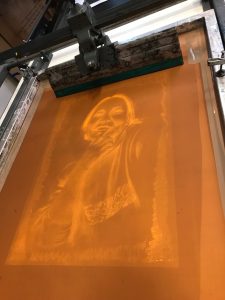
I selected a 165 screen mesh, exposed for 10 light units, washed out and dried ready for printing. The black with red and indigo ink mix was used to make first pull.
3 pulls were applied to build the ink level. The portrait worked well. The screen had held the graphite marks across the image with a good tonal range.
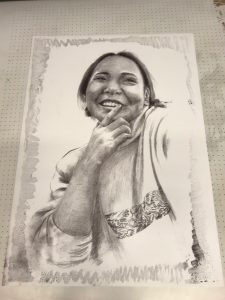
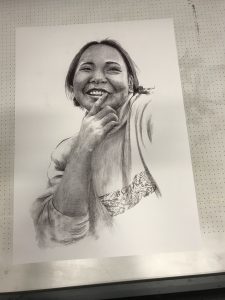
However the beading marks around the edges were not substantial enough to make a valuable conceptual or visual contribution to the portrait. I stopped the beading out and reprinted the portrait on the white paper to stand on its own. This worked well.
Overnight I reflected on the beading. Perhaps I had not been assertive enough. I returned to the studio, reviewed the ink tests I had carried out and decided that a more overall beading might work. From memory I made an outline of where I thought her head and body sat on the A2 print and quickly made beading brush strokes with varying degrees of dilution and breadth of stoke. I brushed the areas, that from memory, were not where the portrait was drawn and printed. I applied the beading mix on all sides of the sheet, but emphasised the brush strokes on the bottom left and mid left, let it dry and laid the beaded film over the portrait print. The beading overlapped the portrait in places, but that might just work rather than being precisely matched to the portrait edges.
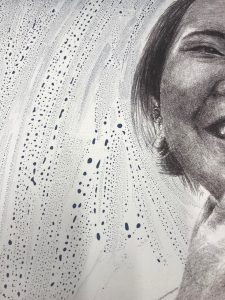
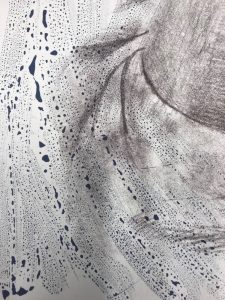
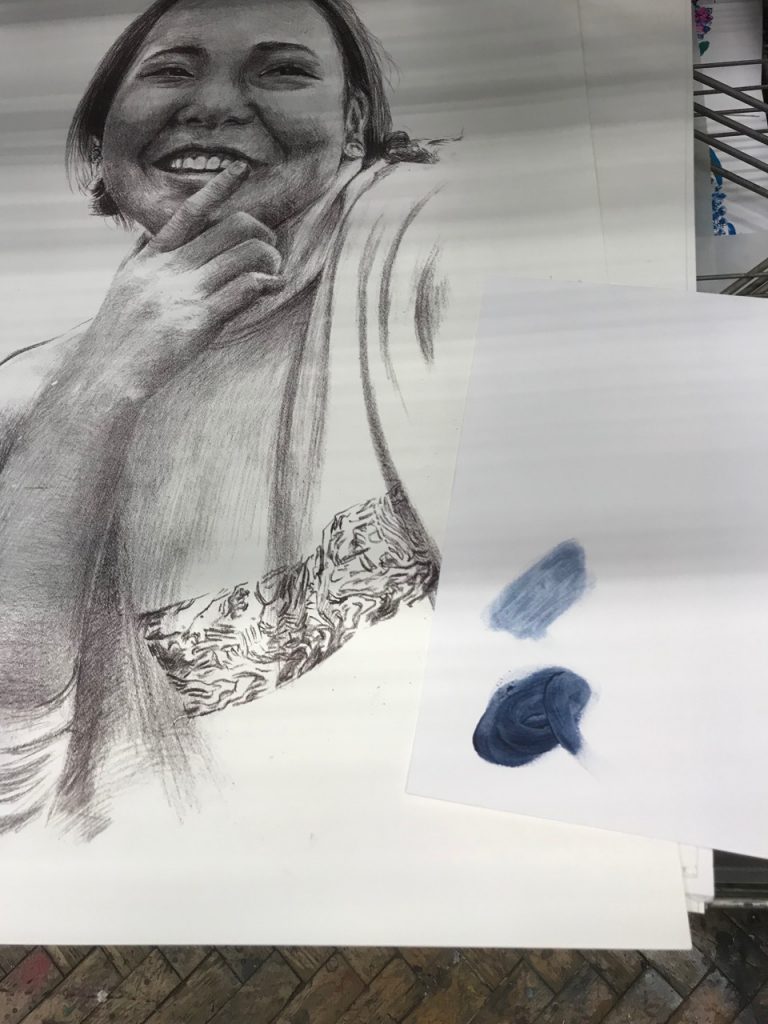
I exposed the beading film with 8 light units to retain the contrasting image. Rather than use the same ink as the portrait I vered towards a blue, once again to reflect on Yuchen’s water colours.The integration of the blue beading with the black brown portrait worked well and responded to the intuitive decision making along the way from drawing to final print. The exposure had not been overall and the top of the beading layer had allowed the highlights to retain some grain of the film as it had been under exposed (probably because of an uneven spread of the light screen exposure unit source), but this added depth to the portrait and further material marks. These ongoing tests of new textured, drawn, painted backgrounds with reference and relevance to the subject are building methodologies that can be applied and rarefied.
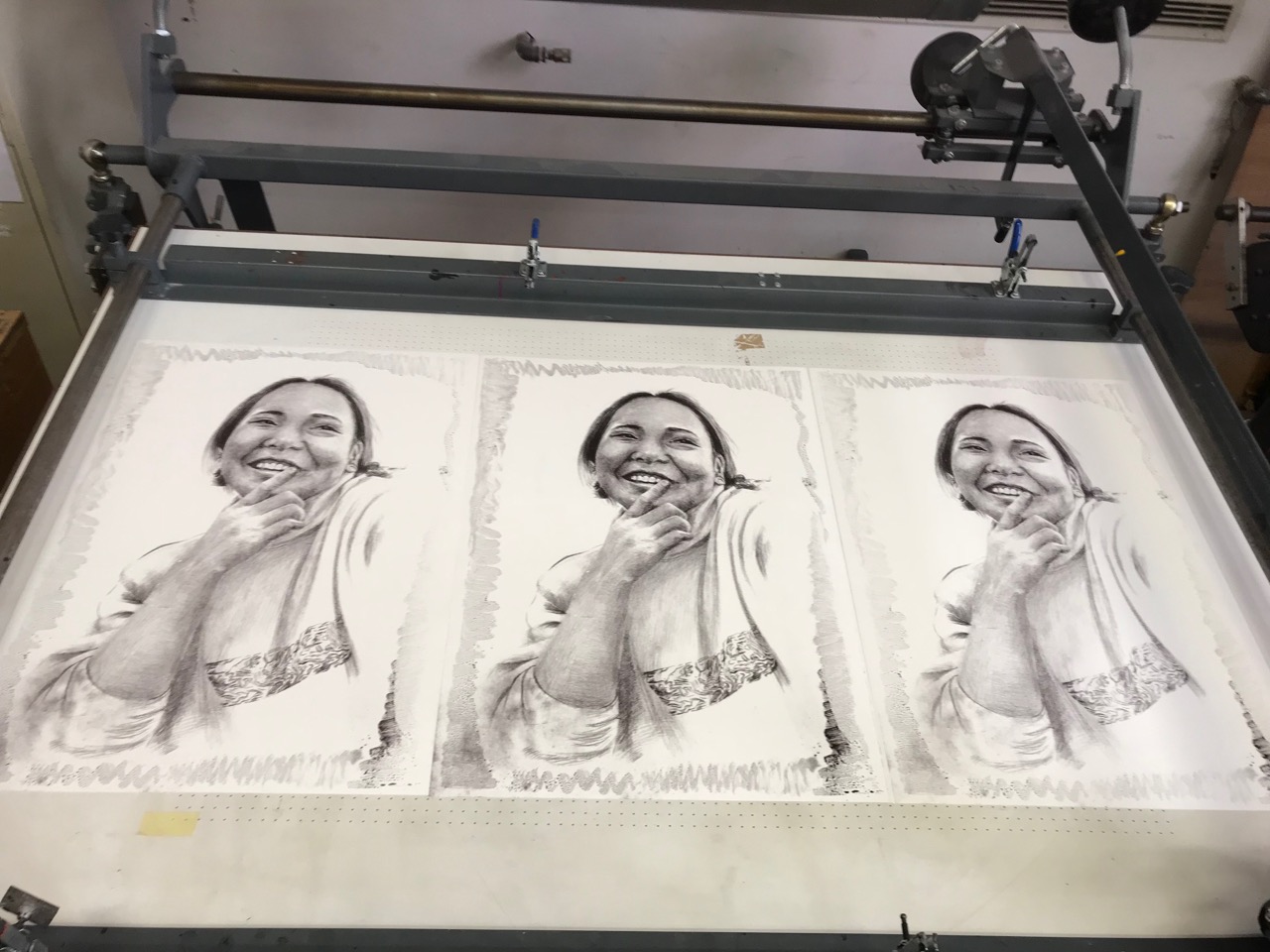
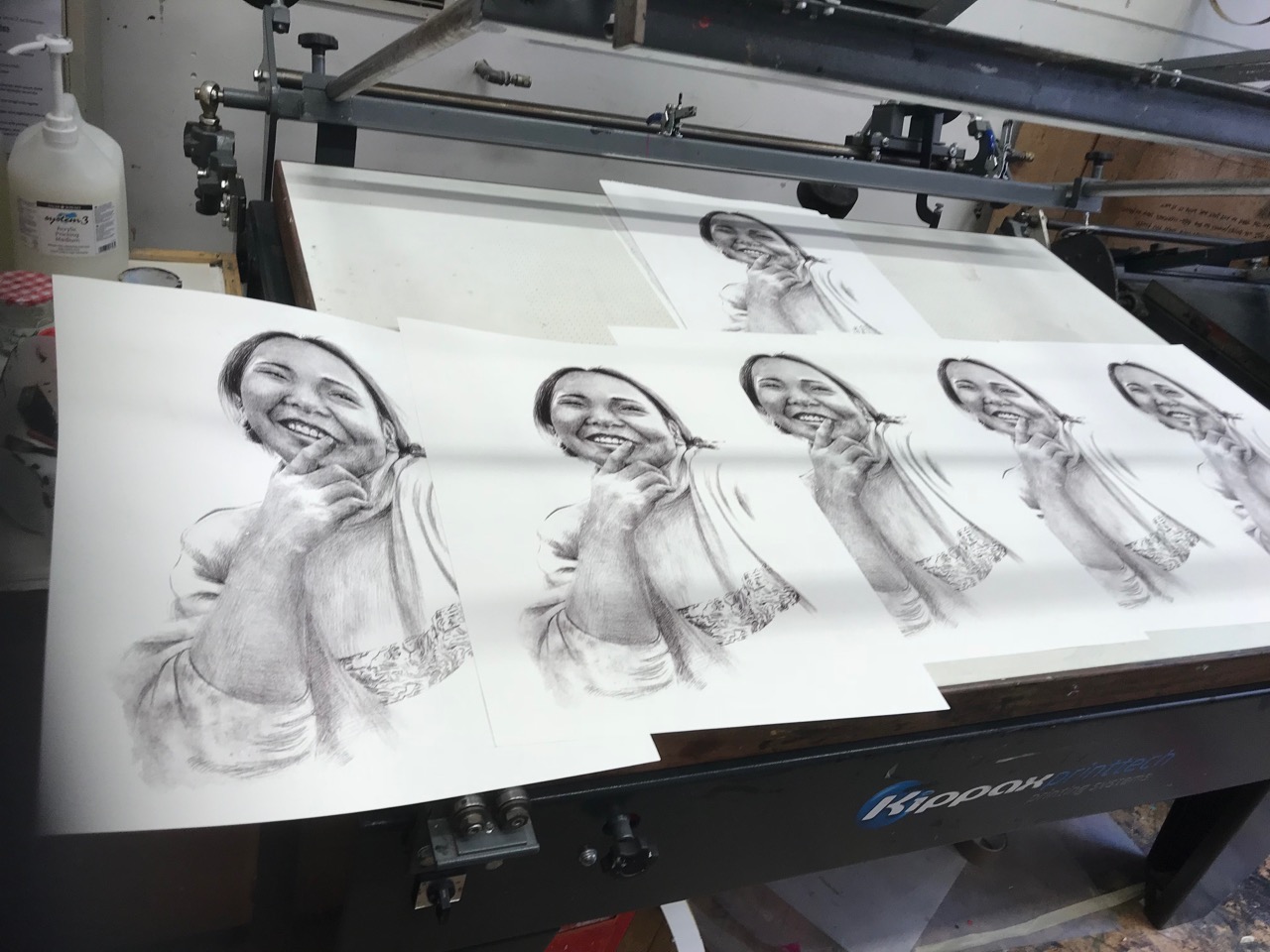
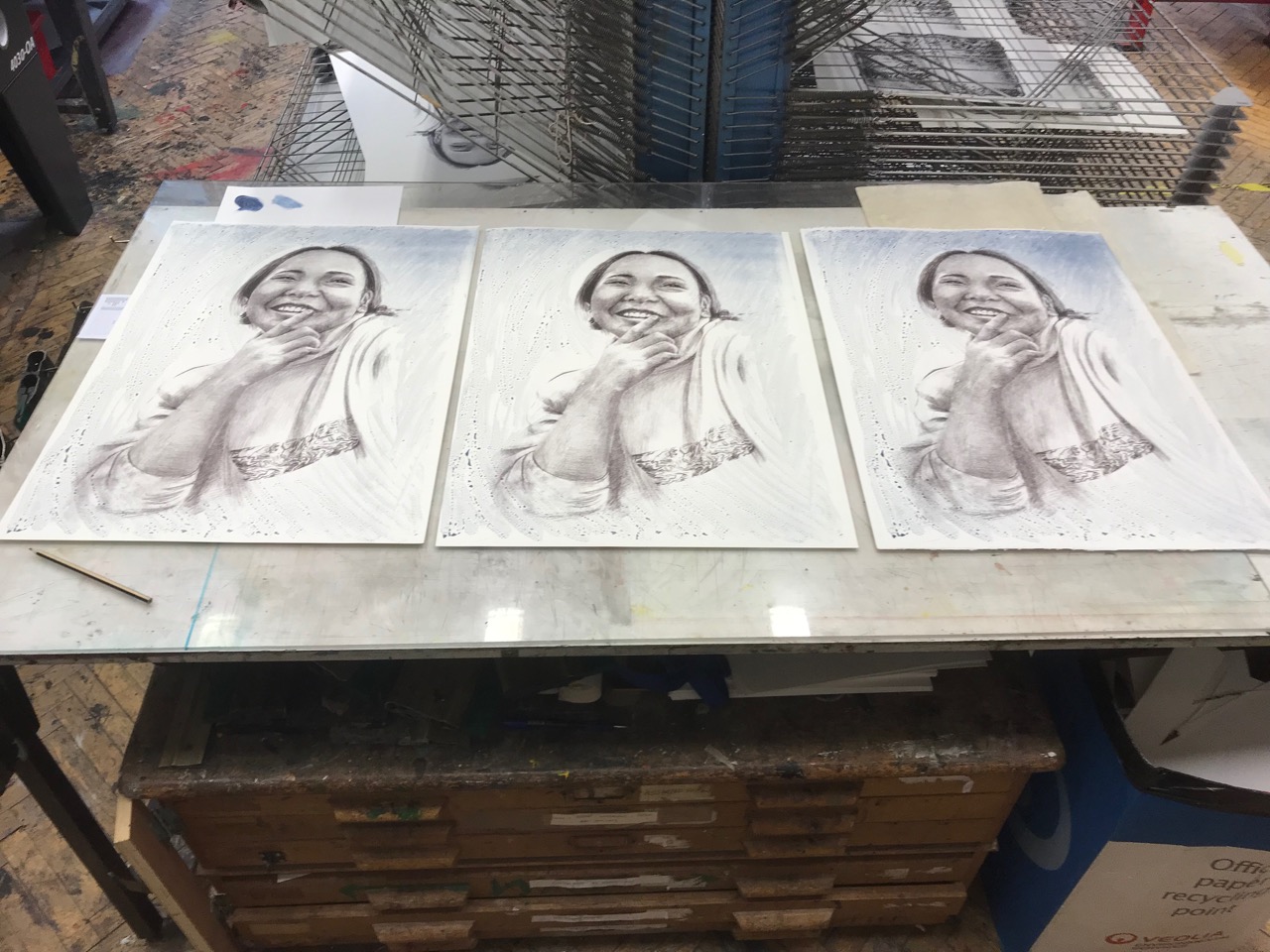
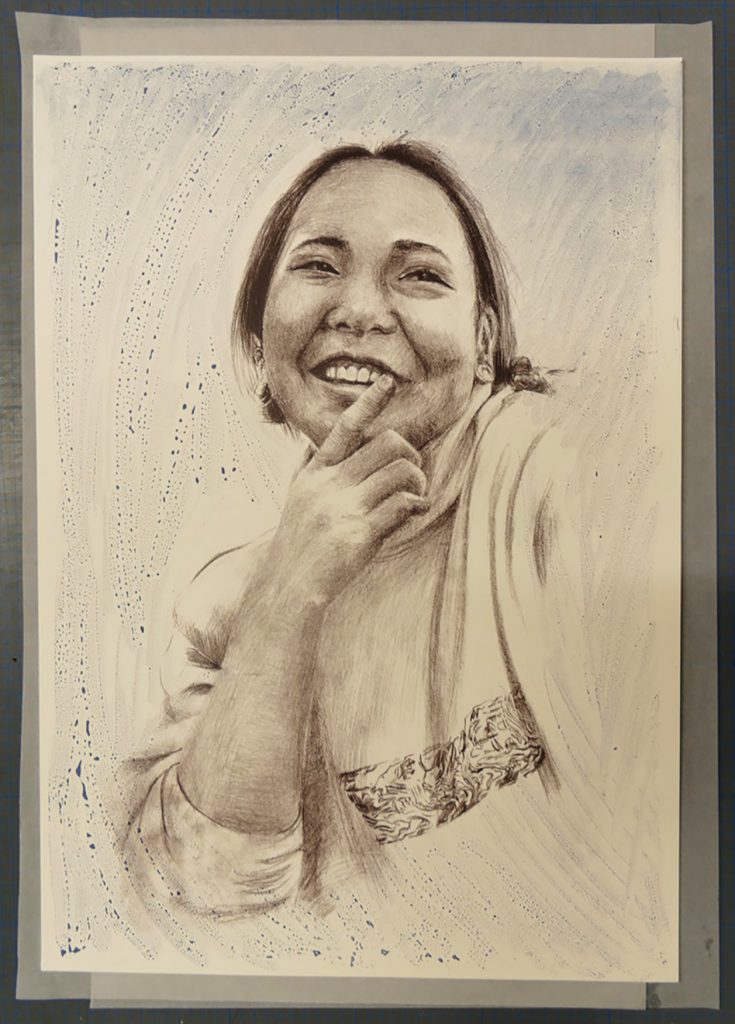
On Yuchen’s return from her European travels I invited her to the print room as I had a surprise present for her. I asked her to close her eyes and laid out the three prints on top of each other in the order I had made them. When she opened her eyes she was visibly surprised and excited to see her portrait. I lifted the first print to reveal the ‘clean’ portrait and then the beaded version. With all three portraits next to each other we discussed the approach to the portrait making and the use of the vine black beading. I was so rewarding to see this happy and excited response to her portrait and I asked her which one would you like: “I would like this one, because I like the beading marks.”
Yuchen then gave me surprise present : a watercolour she had painted in Amsterdam on the back of a Van Gogh Museum postcard. How wonderfully kind.
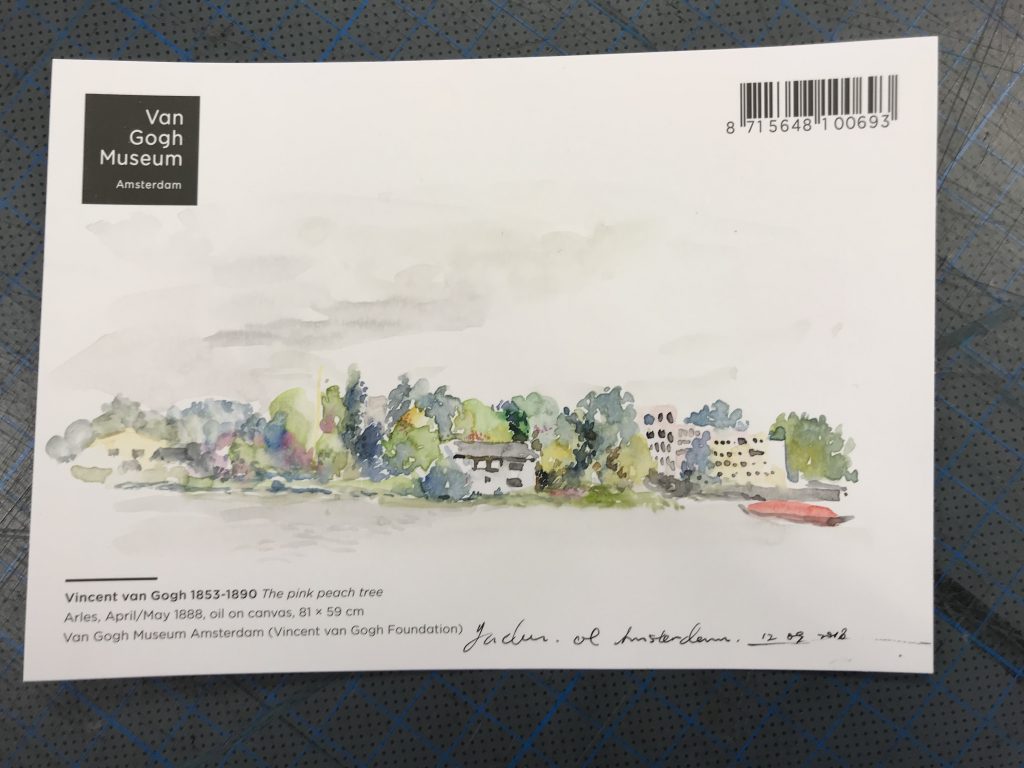
Later we returned to our Instagram channels:

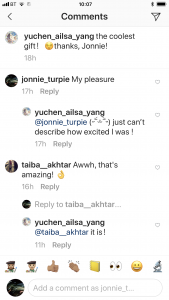
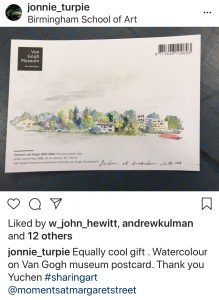
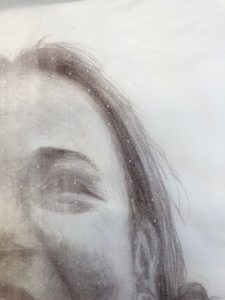
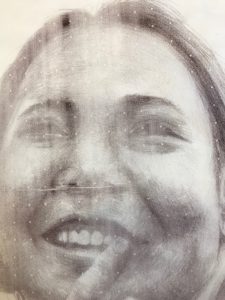
Another departure:
When preparing to screen print I make the first test pull on newsprint or tissue paper. The tissue paper creates a ‘flimsy’ image on flimsy material. On this occasion the vacuum holes on the screen bed pulled the tissue into them and therefore the ink did not reach the tissue and left them blank. This gave a patterned effect on the portrait not unlike the digital image on faces that are being mapped for facial capture masking.
Perhaps hanging the 4 portraits together might be a plan for future exhibition. I dedicated a full print w’shop session to experiment and investigate this ‘vacum dot’ opportunity. Thinking through the elements that might make the dots more effective I experimented with thickness of ink, squeegee pressure, type of paper, position of the tissue paper in relation to the vacuum air holes.
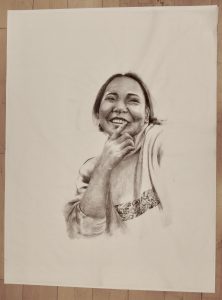

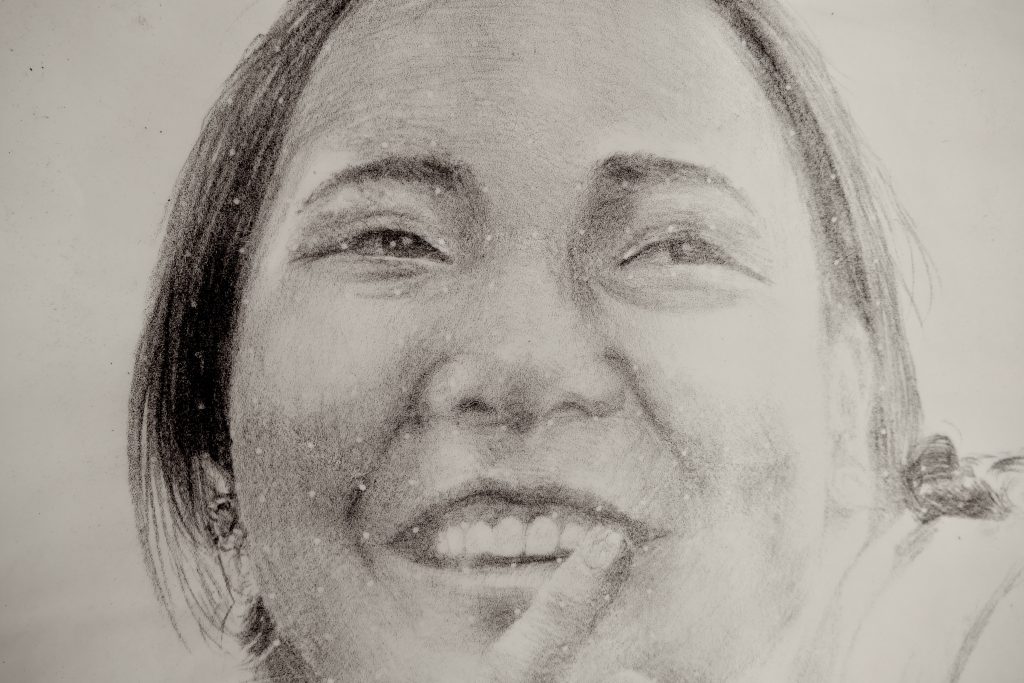
The tissue dot prints were adding a new complexion to the portrait. More modern. More questioning of the figuration. By varying the positioning of the paper the dots could appear on the darker areas of the image to enhance their visibility.
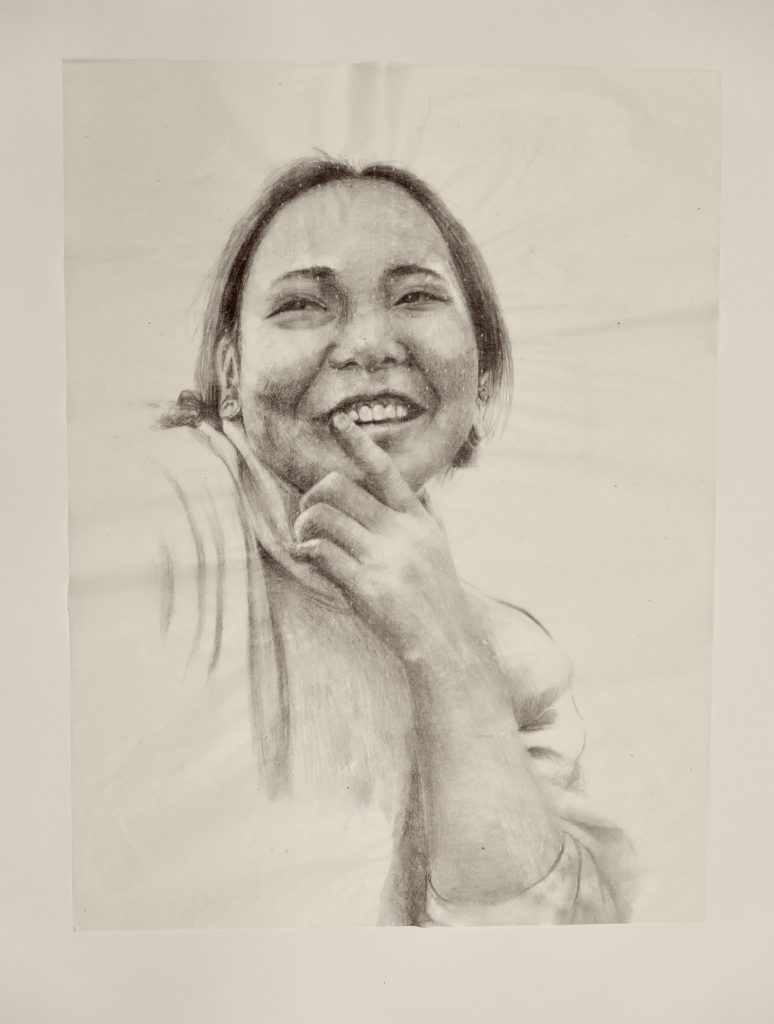

Very fine Gampi Paper was tested which gave a similar white dot effect. The paper though was more delicate and provided a subtler effect that the basic ‘grey’ tissue paper. More experimentation is required with this paper to assess the additional values it may bring. Just working with the paper brings a more delicate and careful ‘feel’ to the process. My research had shown that the chance vacuum dot matrix visual effect could be replicated in predictable ways. However having proved this to be possible for future prints and rather than proceed to making a new print I was drawn to the material difference printing on light weight semi transparent paper brings to the final portrait. It may be framed in a conventional way behind glass, but the physicality and fragility of the paper and the portrait now on its surface gave motivation to investigate where this observation might take the exhibition of the work.
As the prints were now on a transparent medium they were hung flat on a studio window. The back illumination of the image encouraged the portrait to ‘float’ on the paper. The dot matrix was more prominent on closer viewing.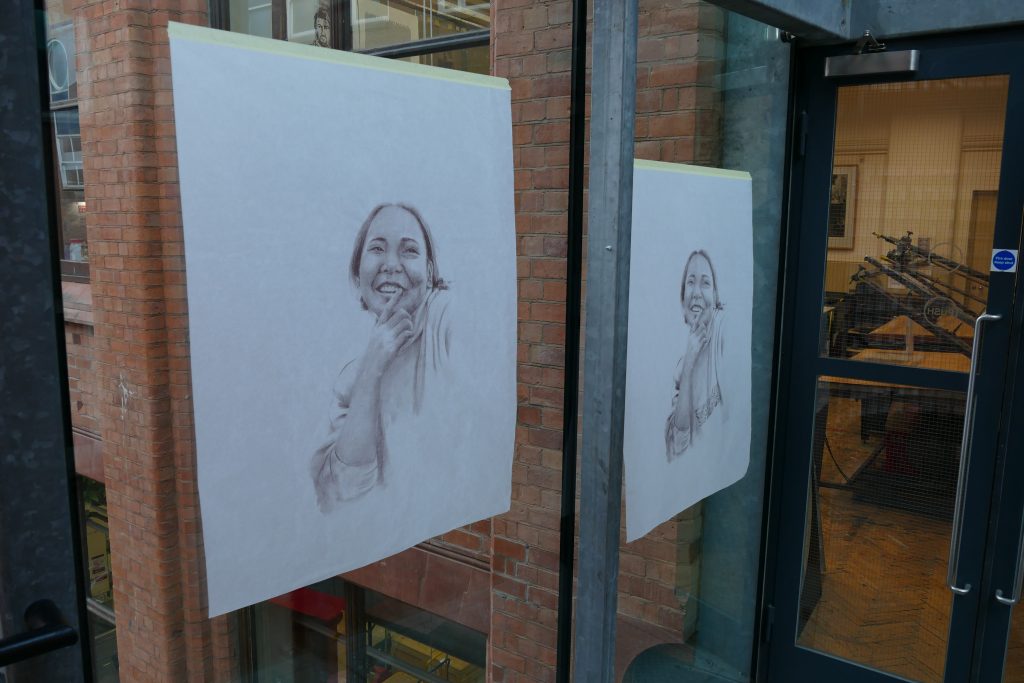
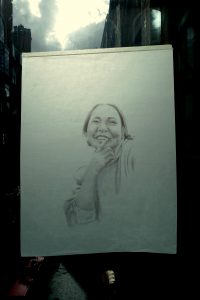
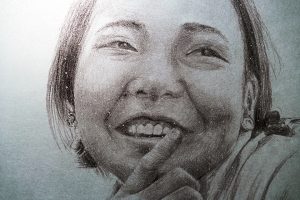
And then hung irregularly on the window, which brought another interpretation. The portrait sits on the paper and is illuminated from behind. This is getting back to the mark resist film drawing original. A transparent film for the portrait to lit. It also brings a three dimensional ‘unframed’ presence to the image and the material it is held within.
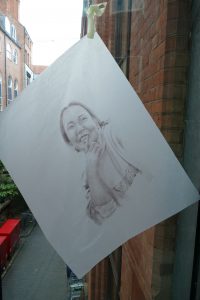
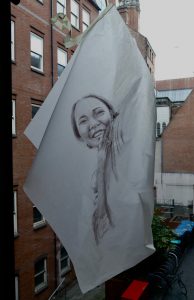
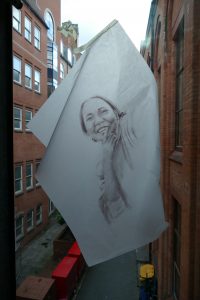
Finally for this period of investigation that began as drawn silkscreen portrait printed on to flat white paper, moved through additional layers of beaded marks and inks; print on to tissue paper and a vacuum dot matrix onto transparent papers hung on windows and material layers of prints the above clip captures the handling of the tissue print from floor to bench and the smoothed image.
Gifu Paper Printing
An original portrait of Yuchen Yang was printed on Canaletto and tracing paper in 2018. (fig 1) The former for traditional fine art print and the later to experiment with the image on transparent paper and the creating of dot matrix patterns from the vacum screen bed.
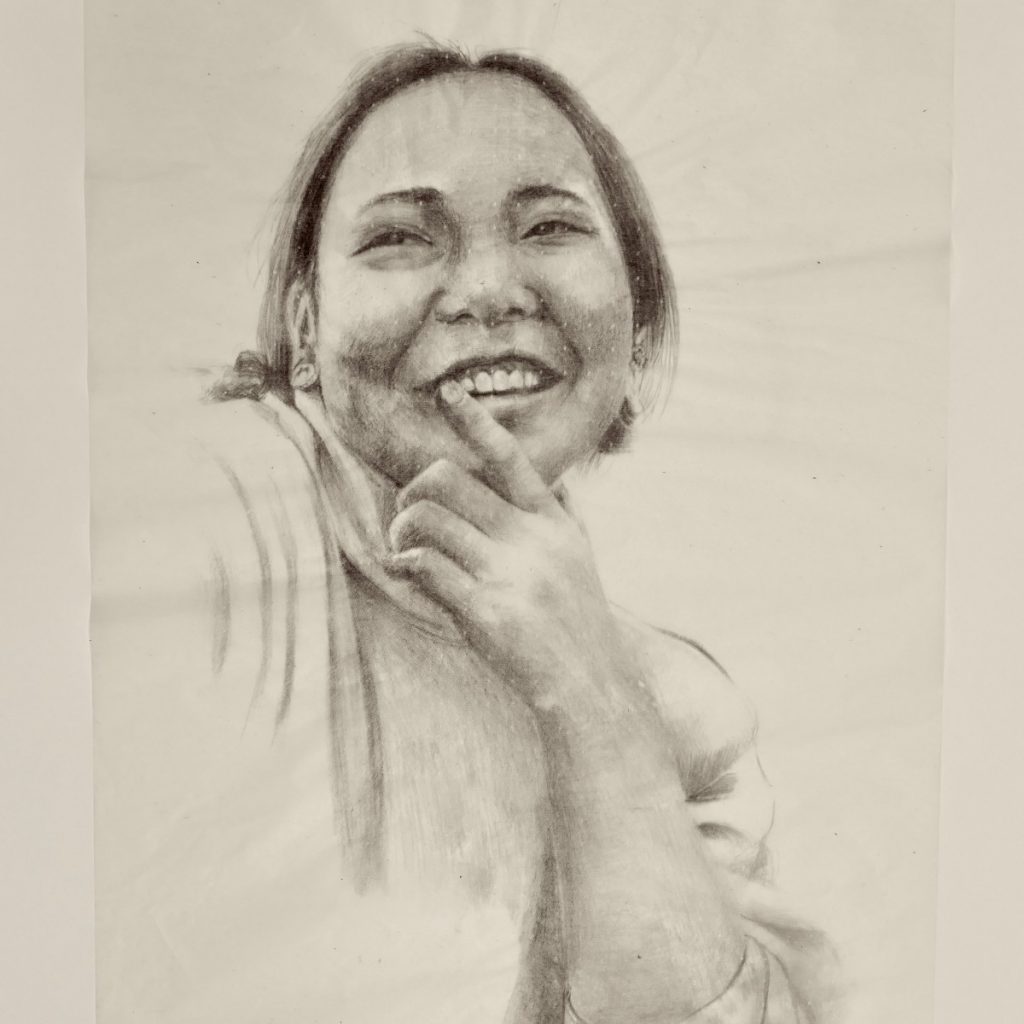
A further print was made on Gampi paper, and hung at 45 degrees from vertical from a gallery wall where the light weight print wafted in the gallery air flows. Fig 2.
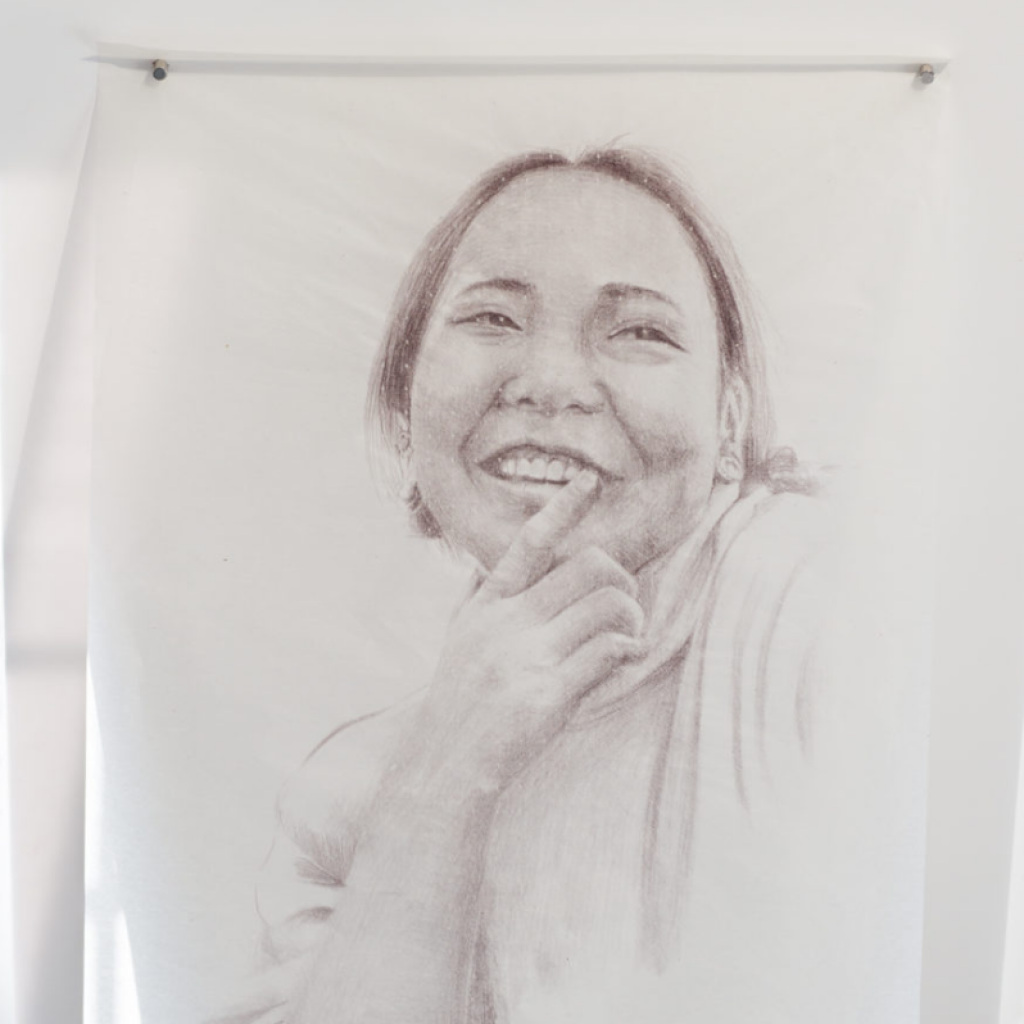
A new Portrait.
For a new 2020 portrait of Yuchen made during the global covid pandemic smooth paper, cartridge and tissue was employed. In addition an alternative Japanese paper was sourced: Gifu 9gsm. This is finer than gampi and with a fabric texture and it is so light it floats. An investigation on how it might take screen ink and be displayed was embarked upon. During printing, problems arose. Rather than the vacuum holding the paper to the bed, the wet ink held it to the screen, lifting it off the bed as the paper was porous and the vacuum air was sucked through it, rather than adhering to the vacuum bed. Not only was the porous gifu paper held by the ink on the screen, the ink had been pushed through the paper onto the screen bed leaving an impression on the bed. Peeling the inked paper from the underside of the screen was difficult as the delicate material could tear. As it was peeled back the inked image attached itself to the paper leaving an unhelpful ink residue on the image and surround, rendering the print useless.
To address this problem the gifu paper was registered under the screen. Rather than rely on the vacuum to secure the paper in position and separate the paper from the screen once the ink was deposited, it was taped on all 4 sides. A sheet of cartridge paper was placed under the gifu paper to protect the screen bed and to provide smooth flat surface for the porous paper to receive the ink. This would also prevent a matrix of empty dots being created from the vacuum suction holes being pulled down and preventing the ink reaching the substrate. This securing of the 9gsm Gifu paper successfully enabled the ink to be pressed on to the paper and the screen to be carefully lifted away from the paper while it was held in place by the masking tape.
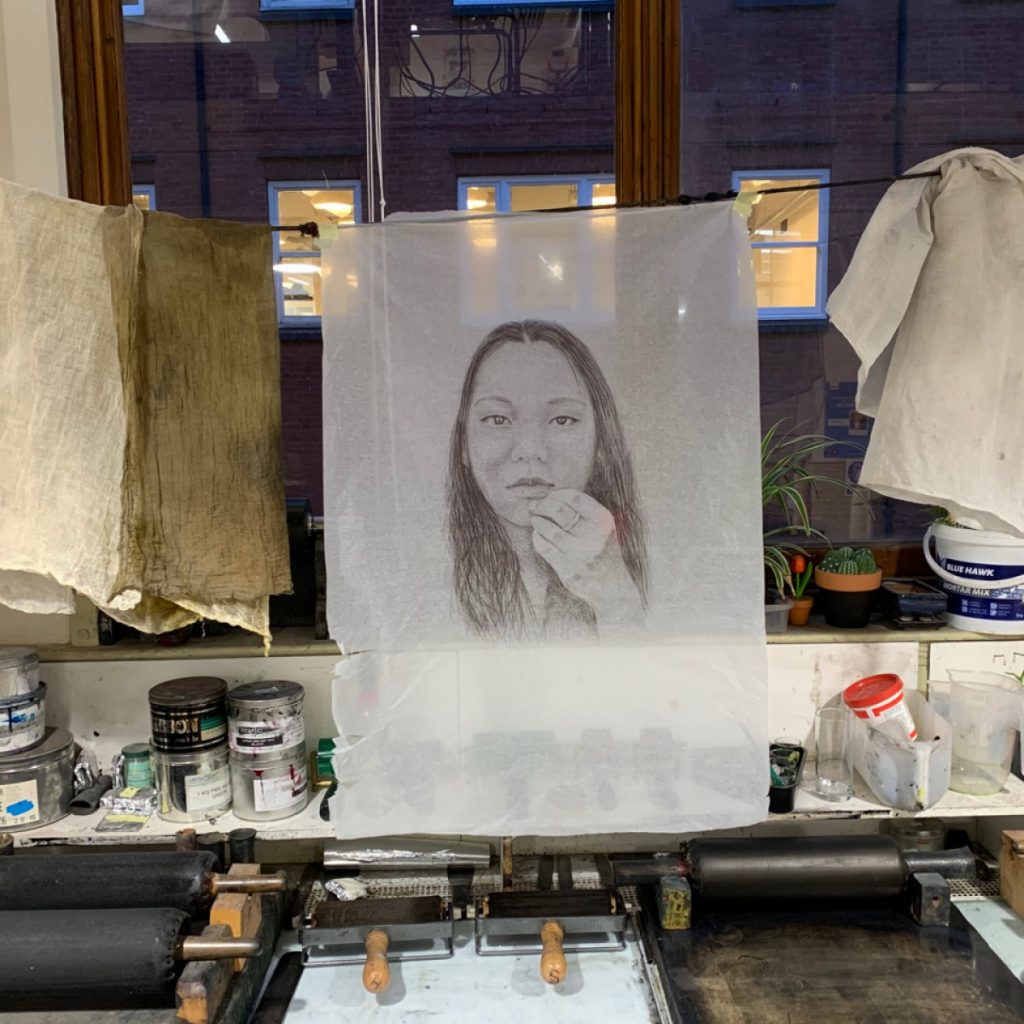
The portrait
The portrait was made with the intention to take minds away from the fear and isolation of the virus epidemic. The direct look of the subject with full focus on the head, framed by the hair with no reference to any context reality, printed on delicate paper with tears in to the edges all contribute to the impression of the precarious and unsettling situation of the many Chinese people living in China. The print is hung with transparent ties on its own on in an empty gallery space. The display enhances the isolationist atmosphere while maintaining a direct identification with the subject of the portrait. From a photo shared digitally across the globe from the East in a time of trauma a bespoke analogue fine art portrait takes a place in a suburban western galley reflecting the human individual in an uncertain foreboding global environment. yuchen-msa-2202
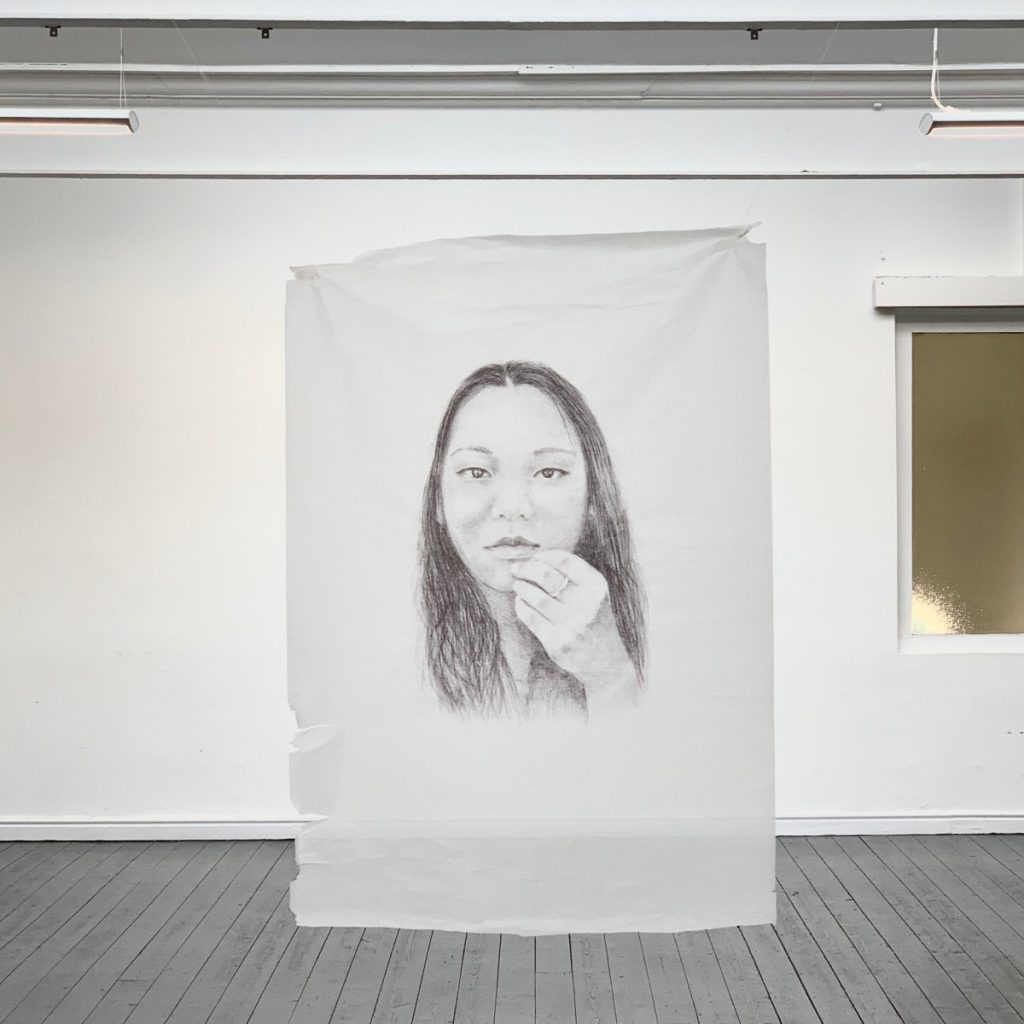
Background to the Portrait Selection.
In January 2020 Yuchen had been locked in her home in Guangzhou for three weeks. To counter this personal experience and the global coverage of the virus being touted as a new zars virus from China, I offered to make a second portrait now she was living and working in her home city. The first being when she studied in the UK. My motivation was to take minds off the virus fears. As we could not meet Yuchen sent a selection of 5 photographic images. They were in the main smiling ‘snapshot’ photographs, however in one she was pensive and looking directly at the camera/photographer. Unusually for me I selected the direct to camera photograph as I adjudged it the most appropriate in the context of the outbreak of the virus and Yuchen’s locked down situation.
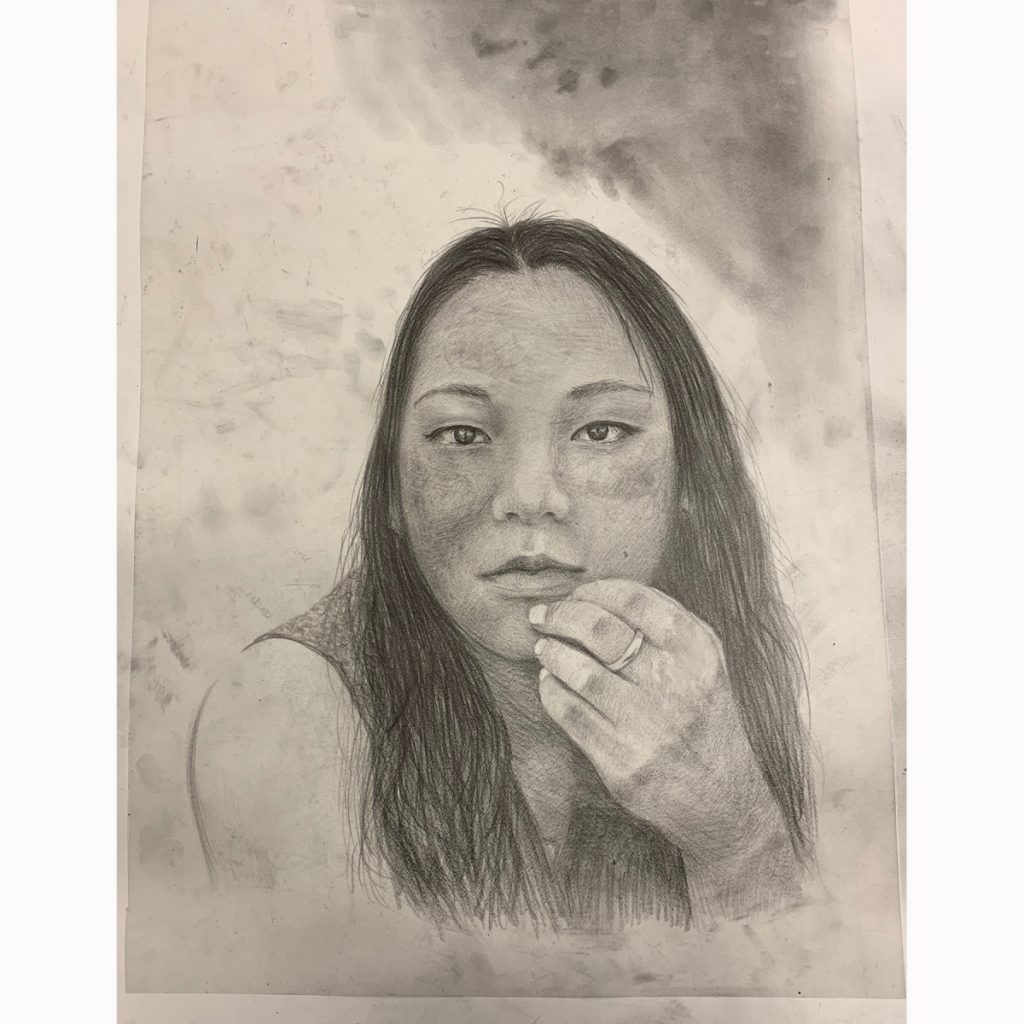
The portrait was drawn with 9B graphite stick on mark resist drafting film. Prior to printing a decision was made to erase the shoulder leaving the head framed by the dark hair with the only context being brought by the hand lifted toward the chin. The print was carried out on buff Cartridge, South Bank Smooth and tissue paper. On review an edition pf 3 was printed on the Buff Cartridge and 3 proofs on tissue paper delivering a dot matrix pattern as per the first portrait. A further print was made on the 9gsm Gifu paper.
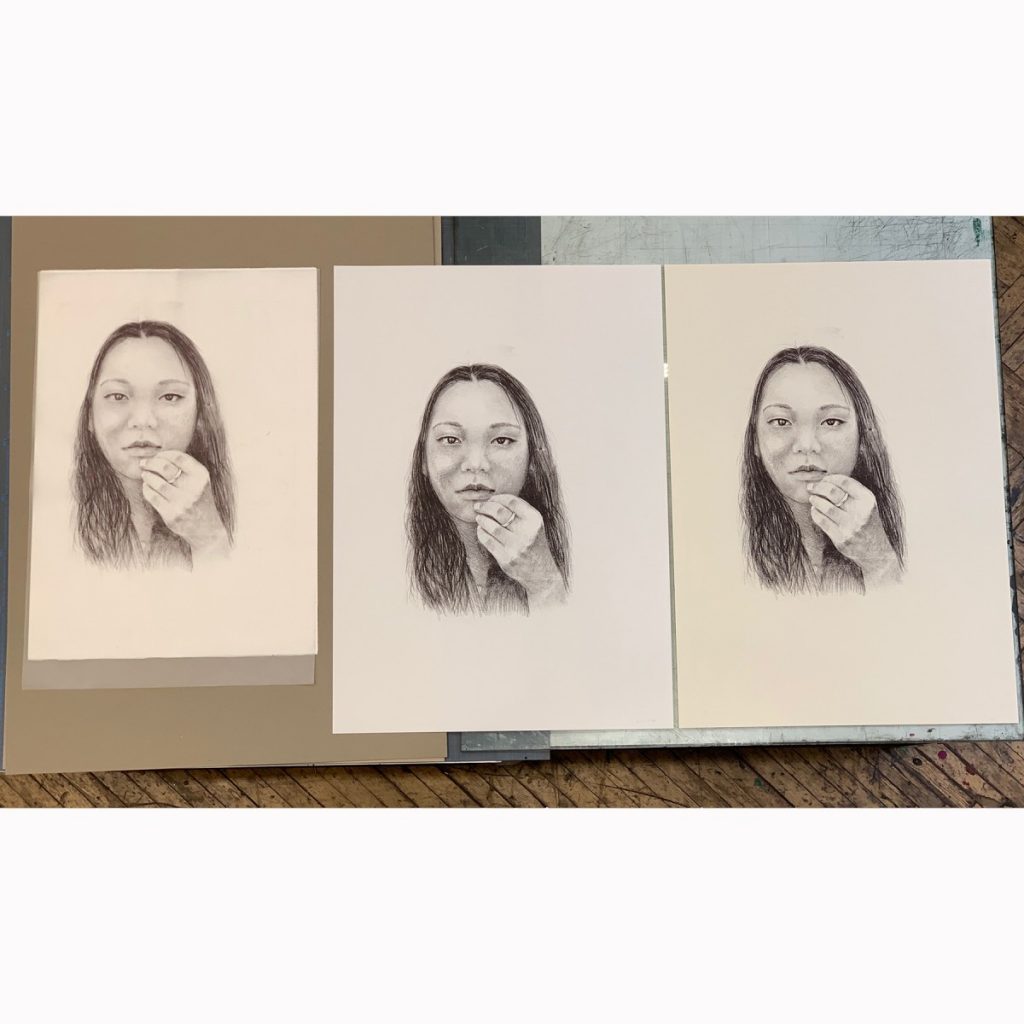
The prints were digitally shared with Yuchen who approved of them. She shared with her friends who confirmed the likeness and commented on the distinctive hand gesture. I responded that I had built upon the original photograph that reflected her persona. I enquired who had taken the photograph expecting into be her boyfriend, but it was in fact by a photography teacher: Franco Wang. The prints on substantial paper with the portrait surrounded by expanse of paper hang well with a sincerity that was intended at the outset. The Gifu paper with its lightness of weight and semi transparency took the ink with enough density to reflect the subject. The torn edges ellict a sense of fragility which is further taken towards a solitary condition akin to the situation of those that are unfortunate enough to contract the coronavirus. Yang’s powerful direct visual connection with the viewer brings a sense of strength in opposition to the virus and her communities’ actions to prevent illness spreading.
In agreement with Yuchen her portrait was uploaded to Instagram with a message identifying with Yuchen and the many people unable to leave their homes.
